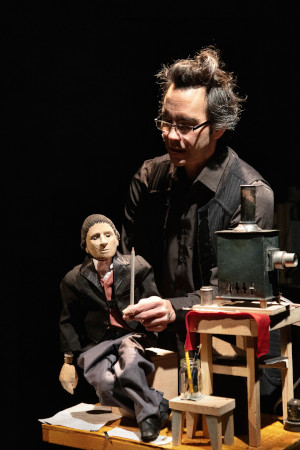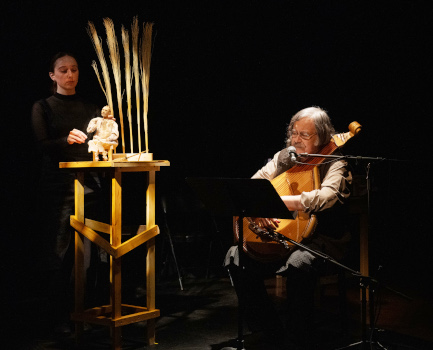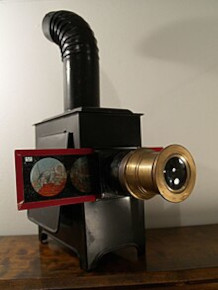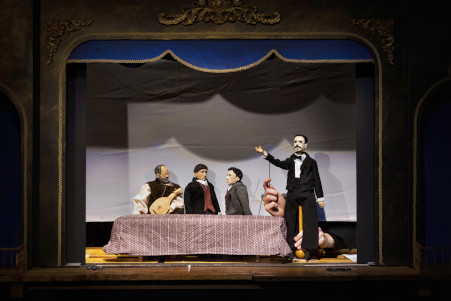
|
Beate Hein Bennett
The raging war between Ukraine and Putin’s Russia is the most recent installment in a long series of existential conflagrations between those two entities--states, nations, republics, empires, hetmanates (all those titles apply)—in the course of hundreds of years. It is the stuff of a complicated history of inter-Slavic and intra-Slavic movements towards independence and nation building, most ardently debated during the 19th century when political and cultural Romanticism influenced these diverse efforts throughout Europe within repressive states and empires. Czar Nicholas I repressed any nationalistic or proto-democratic movements (the Decembrists in the 1820s). After a brief thaw under Alexander I, Alexander II forbade with more virulent tactics any Ukrainian manifestations of independence, e.g. speaking and writing in Ukrainian or supporting any Ukrainian cultural expression. During the Russian Revolution and the subsequent Russian Civil War (1916-1922) the battle lines within Ukrainian efforts towards independence shifted among diverse interest groups, Bolshevik, nationalist, and anarchist that resulted in a short-lived independent Ukrainian Republic, roughly between 1920-1923 before being incorporated into the USSR under Stalin’s violent regime. The enforced union lasted until 1992 when the Communist regime collapsed under internal pressures, and the USSR fell apart into independent republics with various forms of oligarchic autocracies, Russia most notably emerging as the dominant one under Putin with his dream of re-establishing the Greater Russian Empire. (By the way, Ukraine bore the moniker “Little Russia” throughout the 19th century. Part of the region was called “The Pale of Settlement” where imperial Russia had forced Jews to settle, and where concomitant persecutions and pogroms culminated in the horrors of WWII and the Holocaust. But that’s another hi-story…) While American and European newspapers are providing daily news about the present Russian aggression and decimation of an entire nation whose legitimate independent existence is being denied, the people’s spirit at home and abroad finds sustenance in its cultural traditions. The latest offering by the Yara Arts Group under the founding leadership of Virlana Tkacz connects to this spirit and fulfills a mission by unearthing and presenting the work of artists that have shaped Ukrainian consciousness and sensibility. Her productions, often in a multi-media format, delve into lesser known, at least to Western eyes, Ukrainian cultural figures and artists. Her recent production of the cabaret “Slap”, performed in the original LaMaMa space in a basement on 9th Str., centered on the 20th century artist David Burliuk; the present theater piece “The Magic of Light” brings to light the achievements of artists from the 1860s and 70s whose works in painting and music were showcasing the traditional forms of Ukrainian culture found among the peasants, in myths and legends often transmitted orally by “kotbars”, the wandering minstrels who traversed the Ukrainian steppes. Like the ancient Greeks, they sung/recited the epic legends accompanying themselves with a traditional Ukrainian string instrument, the bandura.
Virlana Tkacz has once again collaborated with the superb bandura master musician/performer Julian Kytasty whose singing/reciting and strumming brings to life the text with dialogue among the various characters, the poetry, and various traditional songs, most centrally among them the tragic epic, “The Three Brothers from Azov.” Julian Kytasty is channeling the spirit of the blind popular kotbar Ostap Veresai (1803-1890) who traversed the Ukraine and performed at the 1875 Salt Palace Concert which was organized for Veresai by the well-known composer, pianist and conductor Mykola Lysenko (1842-1912) whose work has also inspired Mr. Kytasty. “The Magic of Light” production weaves together dialogue, poetry, and music in a richly entertaining performance. A major visual and performance component is Puppetry, the special kind of puppetry art that combines hand-held puppets with a visible puppeteer/actor whose hands, facial expression and voice gives the puppet the emotional dimension of the character. Tom Lee is the puppeteer/actor who brings to life the central character/puppet, the painter Porfiry Martinovych (1856-1933), whose drawings were projected by the magic lantern during the Ostap Veresai concert at The Salt Palace.
Tom Lee’s fine artistry—he is a master of various puppetry traditions and video projection designs—is critical to making the puppet human, as he gently moves the puppet with his hands, his visible face and clear voice carrying the wide range of emotions from humor to dejection. Black and white shadow puppets, designed by Linda Wingerter and projected against a backdrop take over at certain points the lively action in the narration of the life of Porfiry Martinovych and his encounters with influential personalities, all represented by hand puppets that have been beautifully carved and designed by Kevin White with realistic individual features and clothing. These characters are all historical figures and include Porfiry’s father Denys, a court clerk; his teacher Gottfried Willewalde (1819-1903) at the Imperial Art Academy; his friend and fellow student Mykhailo Yegorov, born in 1860; and the subjects of his drawings: the beekeeper Pavlo Tarasenko; the professor of economics and statistics Oleksandr Rusov (1847-1915), who published the works of Taras Shevchenko (1814-1861), the best known 19th century poet and writer who was born as a serf and achieved freedom because artist friends bought his freedom. (He does not appear in this story.)
Apropos living history: LaMaMa (63), Yara Arts Group (35), Taras Shevchenko (born March 9, died March 10!) and the old East Village neighborhood. Should you make your way to a performance of “The Magic of Light”—and you should—it is a neighborhood full of Ukrainian vestiges. There is the food with the restaurants on 2nd Ave./9th Str.: Veselka, and the Ukrainian Restaurant in the Ukrainian National Home, and Mr. Baczynski’s Meat Market. And if you make your way a couple of blocks north from LaMaMa, there is the Taras Shevchenko Place between Second Avenue and Third Avenue connecting 6th and 7th Streets where you find the St. George Ukrainian Catholic Church….and McSorley’s, but that’s Irish! It was the old Lower Eastside, once an amalgam of German, Polish, Jewish, Ukrainian immigrant populations working hard to make it in the mythical (Yiddish) goldene medine, now it is the fashionable East Village full of students who try hard to make it…in real New York. |
| recordings | coupons | publications | classified |





